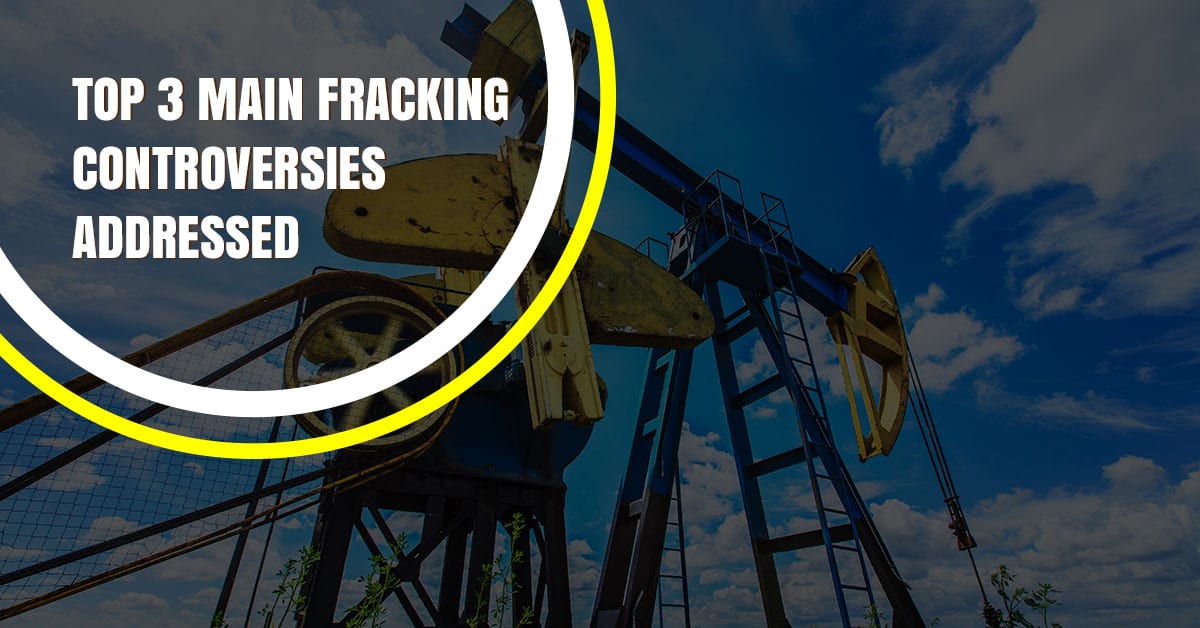The hydraulic fracturing industry is regularly fraught with difficulty and controversy, even when the United States relies on natural gas as the number one producer of electricity in the nation. Natural gas helps support growing economies and nations all over the world as the number one alternative to coal. The energy industry has always had a tumultuous past with environmental groups, and sometimes for good reason. Coal was a huge cause of worldwide air pollution, even causing thousands of deaths in London in December of 1952 due to the increase in coal power used to warm houses.
London isn’t the only city to have experienced deadly air pollution due to coal. In fact, China and India have had many problems with smog and air pollution due to coal in recent decades. And while natural gas helps reduce air pollution, especially in terms of smog and carbon emission, there have been other challenges and controversies that have faced the industry. Today, we’ll take a look at the top three environmental controversies that surround the fracking industry, even when we rely so heavily on natural gas for civilization to exist.
Drinking Water
Having access to clean water is key for life to exist. However, water is also a key component to make hydraulic fracturing possible. Water is injected down into shale miles below the Earth’s surface in order to release the natural gas locked away. When the water returns to the surface as flowback, it carries the natural gas, chemical, radioactive isotopes, and salts back to the surface. There have been some arguments that this process can contaminate aquifers, however, there has been no evidence that shows this to be accurate. The actual concern comes when the wastewater is handled at the surface. Spills are more likely to happen when wastewater is being moved from the well into frac tanks. It’s poor handling near water sources that may lead to some form of contamination, but once again the Environmental Protection Agency still stands by their statement that there is not enough data to support a conclusion. In fact, this issue could become a null and void issue with proper training and liquid waste management around a frac site.
Mid-Continent Earthquakes
Earthquakes and tremors were virtually unheard of in places like Oklahoma until recently. In fact, the amount of mid-continent earthquakes have grown practically exponentially. Unfortunately, this is one issue that can be traced back to fracking, specifically wastewater injection. According to the United State Geological Survey, “Wastewater disposal wells typically operate for longer durations and inject much more fluid than hydraulic fracturing, making them more likely to induce earthquakes.” There are a couple of ways this particular issue could be addressed in order to eliminate any risk of mid-continent earthquakes.
The first would be to avoid wastewater fluid-injection all together during the wastewater disposal process. Opting for frac tanks and wastewater management or treatment over invasive fluid-injection processes would keep the wastewater out of the ground and away from causing any seismic activity.
The other option would be more comprehensive risk assessment of a site prior to drilling or wastewater disposal. This would include detailed surveys with “site characteristics, seismic hazard, operational factors, exposure, and tolerance for risk,” according to Stanford University.
Wells Leaking Methane
Methane is a main component of natural gas and is retrieved during the hydraulic fracturing process. Unfortunately, while it is beneficial for energy production, it’s not ideal to have it loose in the atmosphere. While the issue has gone back in forth, arguing what type of impact this issue may have, there is no real conclusive evidence to support either side of the argument.
There has been some research into the issue that has provided minimal information about what may actually be happening and what can be done in order to reduce methane leaks from wells. The first thing we do know is that the main culprit seems to be oil wells and also that old, abandoned wells cause more problems than current wells. According to Yale Climate Connections, “Factors that can explain leaks may include geological, operator, regulatory, or other variables.” There doesn’t seem to be one standard identifiable cause of methane leaks, compared to the many that have been seen across a sample of 8,000 sites. Further research could help to identify what the main problems are and how they can be addressed appropriately.



